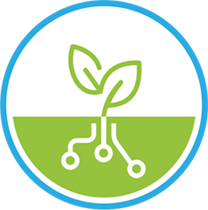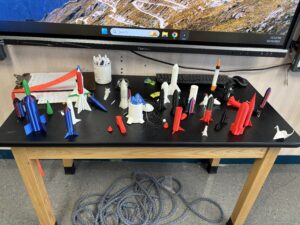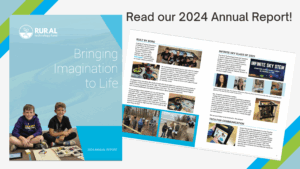Kate Olender, a tech teacher from Lenox, MA, is bringing the world of coding to her students in Pre-K through 5th grade! With a passion for teaching computational thinking to young minds, she received a grant to bring KIBO robots into her classroom. These interactive robots help her students learn to build and program in a fun, hands-on way. After seeing her students thrive, Kate decided to share her expertise with other educators in her county, leading a professional development workshop on Micro:bits.

Kate first saw KIBO robots in action at a Computer Science Teachers Association conference in Rhode Island, and she was hooked. She said, “I love that once the students see a model of the newest concept – say a loop, they can build all sorts of codes and then they can explain them.” The KIBO robot scans the codes on the blocks and follows the sequence, letting students create algorithms, translate them into “computer language,” and troubleshoot as they go. For her young students, physically building the program “really makes this process very concrete to my students.”
By taking objects familiar to younger kids, in this case, wooden blocks, KIBOs introduce students to the foundations of programming and block-based coding.

“Students have begun using the repeat blocks to get the KIBO to repeat certain parts of a program, beginning the concepts of ‘loops’ in computer programming. We also use the ‘Wait for clap’ block, which allows students to see a sensor and what that does in a program.”
“Students create a doll and then write a program on paper (the algorithm) as a team. They program it to dance on the Dance Party day. The teams had to explain their programs to the class and then play their program. The students were able to connect the program and actions of the KIBO.”
“I have heard so many of my Kindergarteners (yes, kindergarteners) saying to each other, ‘Now you make your algorithm’ as they work with KIBO.” – Kate Olender

When it was time for her annual county-wide PD session, Kate knew she wanted to share her tech knowledge with other teachers in her area. Located in the western part of Massachusetts, the teachers in her area come from small, rural districts with an average of about 750 students from Pre-K through 12th grade. Kate explained, “I love showing other educators a project and then together we brainstorm how the device could be used in their classroom and what ideas they have for doing something I didn’t even think about. I learn so much from them.”

“We used the Micro:bits to gather data on sound, light, and temperature to find the best place to take a nap. Students would do this same thing within their schools and then analyze the data to determine the answer.”
“Here is the data that was gathered and participants learned how to have the Micro:bit show the data in two ways – on a graph or as raw data.”

The workshop was a hit! Teachers found creative ways to connect Micro:bits to classroom standards, and many were excited to ask their principals for a classroom set to add to the Micro:bit they were taking home from the training. Kate is committed to reaching out to more educators in her region, helping teachers introduce computer science to younger students.

Kate shared, “My goal: to expose as many students in the young grades to CS so they see themselves in CS and will sign up for a class when they are in high school.” We are so thrilled to be able to follow along with Kate and her students!
Stay up to date with our quarterly newsletter here!






